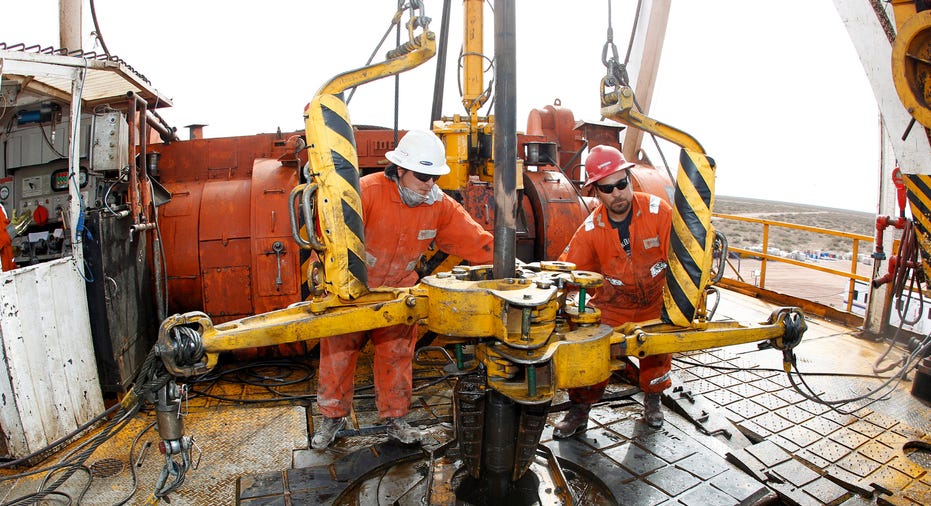The Silhouette of Stability in February Commodities

Another month in which commodity markets were caught in a blundering haste of the well-established yet narrow theology of talking heads, technician charts, and textual variants. Investors spent the month fretfully drawn to ambiguous pseudo-pictures including the breathless commentary of cheap gasoline, negative rates, Brexit, recession, and a flattening yield curve.
In February investors were preoccupied by those exercising great delight in pushing the limits of quantitative finance, mixing varied esoteric mathematical models, and producing a vortex of “doom and gloom” as an apotheosis for the masses. Sentiment itself had become a convincing market fundamental in February - possessing an evocative draw while leaving little space for imagination or interpretation.
By mid-month, sentiment was solidified - possessing the proper, indeed reverent, carefulness of a surgeon and yet, peering through the curtains on February 11, shone something true and pleasing and fulfilling: The February rally in crude prices! That event alone was one of the biggest upside risks for the market, though it’s not yet clear whether prices have reliably bottomed out or whether they will bounce back or simply stabilize.
Participants knew that a market returning home to its fundamentals is paramount and will require even a fractional steadiness in prices. Amazing what can transpire in one month.
Energy
The market entered February balancing the tailwinds including the acceleration in non-OPEC production declines, strong demand growth, and key grade spreads strengthening versus the blatant headwinds of the stunningly high OPEC production loadings, Latin America’s lackluster demand, and the ever worry of the strong U.S. dollar.
Early in the month crude’s price action revolved around the International Energy Agency’s warning of slumping prices due to higher Iranian output, and that an OPEC/non-OPEC deal was very unlikely. The market drew some comfort in the U.S. Energy Information Administration’s report that U.S. shale output was projected to fall to pre-September 2014 levels.
Mid-month gave the market more hope as the “atmosphere” inside OPEC was shifting with a consensus forming around the need for action to address the supply/demand balance. Markets seemed “giddy” with the mere acknowledgement of the massive structural overhang and the hint of inching toward an output accommodation.
By month’s end, the world’s major producing countries appeared to begin making rabble-rousing remarks about production to help keep a bid beneath prices even though actual definite action isn’t really happening yet – or, anytime soon. Additionally, US shale producers were – all the while - aggressively curbing capital spending and production via a slew of fresh announcements from small to mid-cap shale companies.
West Texas Intermediate crude, the U.S. benchmark, finishes the month at $33.50 -4.76% on the month but well above its February 11 low price of $28.74. Meanwhile, Brent, the international benchmark, ekes out a +0.31% gain in February.
Metals
Gold investors have enjoyed another strong month (+10.58%) as a muted U.S. dollar rally and a sustained reversal in U.S. short-term interest rates have kept gold bears in hibernation.
Chinese import data continues to defy logic as does the inflows to both gold physical and exchange-traded products. Gold is now up +16.37% year-to-date – its strongest start since 1980. An abrupt drop in Shanghai inventory was enough to fuel a 2.61% gain in copper prices – erasing all but 0.61% of its losses in 2016.
Traders continue to be skeptical of this rally given the reality of the secreted inventories in China along with the lack of deference to much needed production cuts. For the month of February, the market witnessed a few convincing short-covering rallies lifting silver +4.10%, platinum +5.83%, steel + 6.2%, and iron ore +13.0%.
Agriculture/Livestock/Softs
February proved disastrous for both row crops and grains.
Corn prices were crushed, falling 4.10% as the USDA upwardly revised farmers 2016 spring plantings. Wheat prices ground down 6.83% as U.S. wheat stocks are projected to hit a level not seen in almost three decades.
Stiff competition from Argentina and Brazil, along with the third biggest crop in history withered soybeans by 3.05% for the month. A mild rally in box prices and news of reduced northern weights pervaded the live cattle market pushing prices up 2.46%.
An International Sugar Organization upgrade was enough to send sugar prices up 7.46%. Brisk sales of framing lumber combined with warm conditions stoked lumber prices +7.45%.
Anticipation of a strong flowering season has outweighed fears of dryness in northern growing areas causing coffee prices to drop 3.52%. Cocoa finishes February +1.87% as traders come to terms with the dry “Harmattan” winds and its effect on key West African supplies.
Foreign Exchange
Despite their economic stagnation, the Japanese yen managed to rally 7.27% as traders await further monetary policy action by the Bank of Japan in March. The data run in February remained Canadian-dollar positive, propelling the currency up 3.52% versus the U.S. dollar.
Talks of crude production cuts along with the latest up move have been a tailwind for the Russian Ruble which rallied 1.53%. After being up 6.5% in the early parts of the month, the South African rand managed to close 0.88% higher as political uncertainty in the country takes center stage. It was a solid month for the New Zealand dollar up 2.04% and the Australian dollar gained 1.28% both of whom took solace in the most recent commodity stabilization.
The announcement of the “Brexit” referendum shook the British pound down 2.20% for the month as traders weigh the potential consequences if the UK indeed votes to leave the European Union.